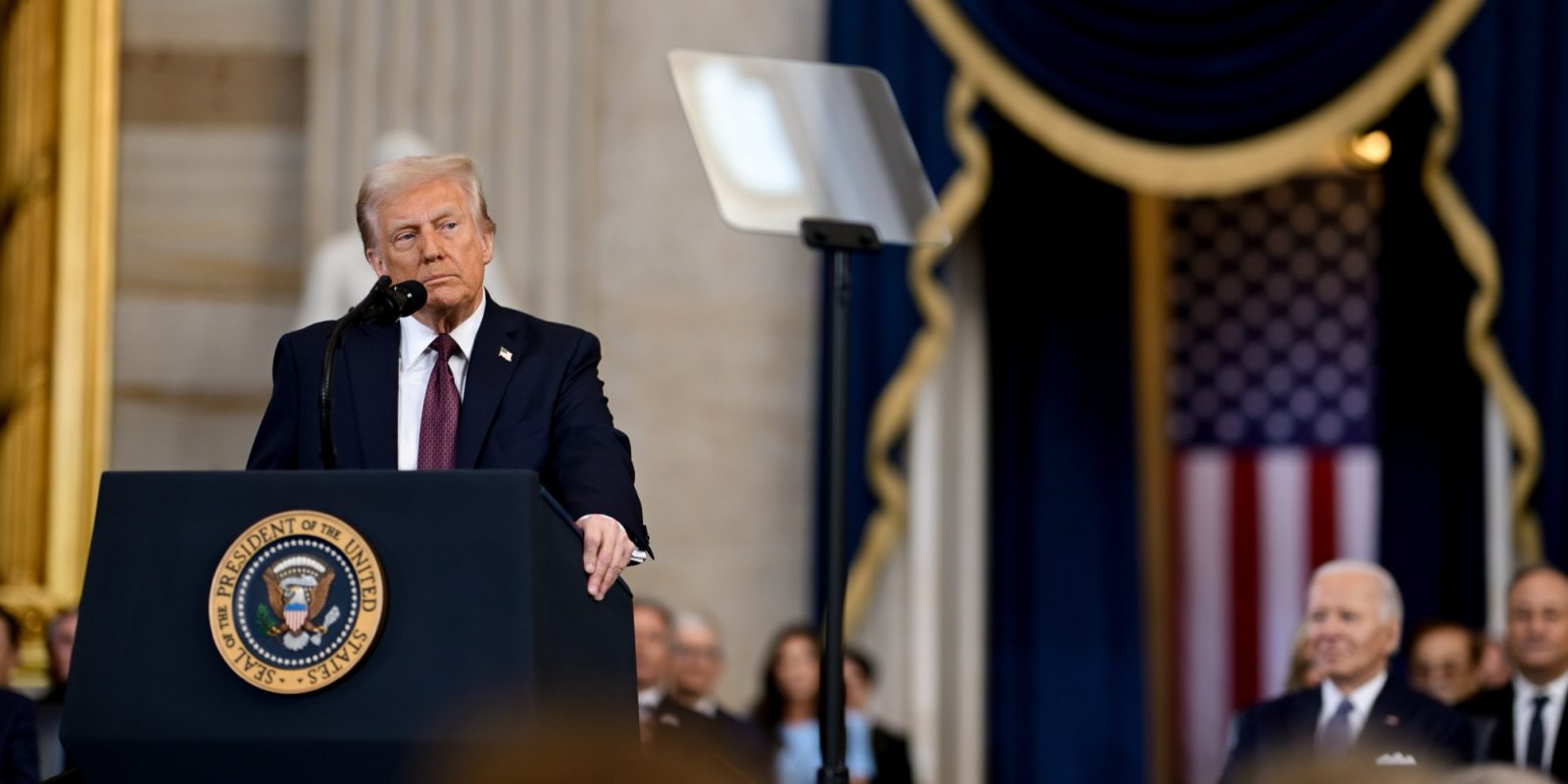
In 2017 President Trump signed Space Policy Directive 1, setting NASA on a mission to return its astronauts to the surface of the Moon using the already in development Space Launch System and Orion spacecraft. It has come a long way, survived one transition of power, but is likely to be taken to battle in Congress.
President Trump, now the 47th President of the United States, mentioned space only once during his address, and it had nothing to do with Artemis and everything to do with a destination a tad bit further away: Mars.
“And we will pursue our manifest destiny into the stars, launching American astronauts to plant the Stars and Stripes on the planet Mars,” President Trump stated inside the Capitol Rotunda about two-thirds of the way through his first speech in his term as President.
The President’s relationship with space has been one of overpasses, exits, and side streets. While many great achievements in commercial spaceflight took place during his inauguration, it wasn’t he who set them in motion. While his name adorns the bills signed into law that enacted the US Space Force, it was something many were already working on getting created. Finally, while he was the one who set NASA forward on a mission to return humans to the surface of the Moon, he often didn’t understand the how or the why that would take place.
However, you could put President Trump’s previous administration in one of the top handfuls for being the most friendly towards NASA’s goals of space exploration. There is a good chance his second term will be much of the same; the how is just unknown at the moment.
There is one person who will likely have the most say in the nation’s space program, Elon Musk. Normally, that is the Vice President, who chairs the National Space Council, but a report states that they might not likely return in a second term for Trump.
Musk spent $277 million helping get President Trump elected to his second term. That much money has bought him plenty of ear time with the President, for now, and that has seemingly cemented a potential new objective of this White House: send astronauts to Mars.
With Starship, Musk believes a human mission is possible as soon as 2028, Trump’s final year as President. If there is one thing a President likes to hear, it’s that a great feat in space exploration is possible before he leaves office. However, this is not the first time dates that fit within Presidential terms have been pushed to get changes made in one way or another regarding NASA’s exploration goals – and historically they have never panned out.
This change in direction could mean disaster for the Artemis Program as we know it. Rumors of the SLS’s cancellation seem to run wild after every new administration. Europe expects less international cooperation, which could lead to Gateway‘s removal from the program. And the money spent to build up a cis-lunar economy will all be for nothing if Musk has his way of bypassing it entirely for his Martian dream.
This will all require fights to be had in Congress. The body has regularly saved NASA missions politically important to it from being canceled, most notably SLS and Orion. The Artemis Program touches all 50 states, which gives it great leverage to continue. However, it touches only a handful of states the most: Louisiana, Mississippi, and Alabama.
The SLS core stage and Orion’s pressure vessel are both manufactured in New Orleans at the same plant that was used by the Apollo and Space Shuttle programs for large rocket components. Mississippi’s Stennis Space Center is used to test fire the RS-25 engines that will then be used on the expendable SLS rocket. Finally, Alabama’s Marshall Space Flight Center is the beating heart of the SLS program.
While states like California, Texas, and Florida also play major roles in Artemis’s agenda, they would likely not see any major dent in their space sectors thanks to a more diversified makeup of programs and skill sets.
But in the South, they build and launch rockets. That’s the name of the game.
Would President Trump rip apart his own program just because Musk has played perfectly into Trump’s desire to go to Mars? More likely than one may think. He’s already done a complete 180 on other first-term policies like the ban on TikTok, which he extended for 90 days even though no sale of the company is in the works.
However, these actions will take months, potentially over a year, to see changes, as much of it has to be moved through budget negotiations. We will have to wait for Jared Isaacman’s confirmation as NASA Administrator before we get a firm stance on what is on the agenda for the next four years.
While he was submitted for formal confirmation, he has yet to receive his hearing. For now, Kennedy Space Center director Janet Petro will serve as acting administrator until Issacman is confirmed. As of now, only the Secretary of State, former senator Marco Rubio, has been confirmed by the Senate. It will likely take several weeks, potentially longer, before we see a new NASA administrator confirmed.
FTC: We use income earning auto affiliate links. More.




Comments